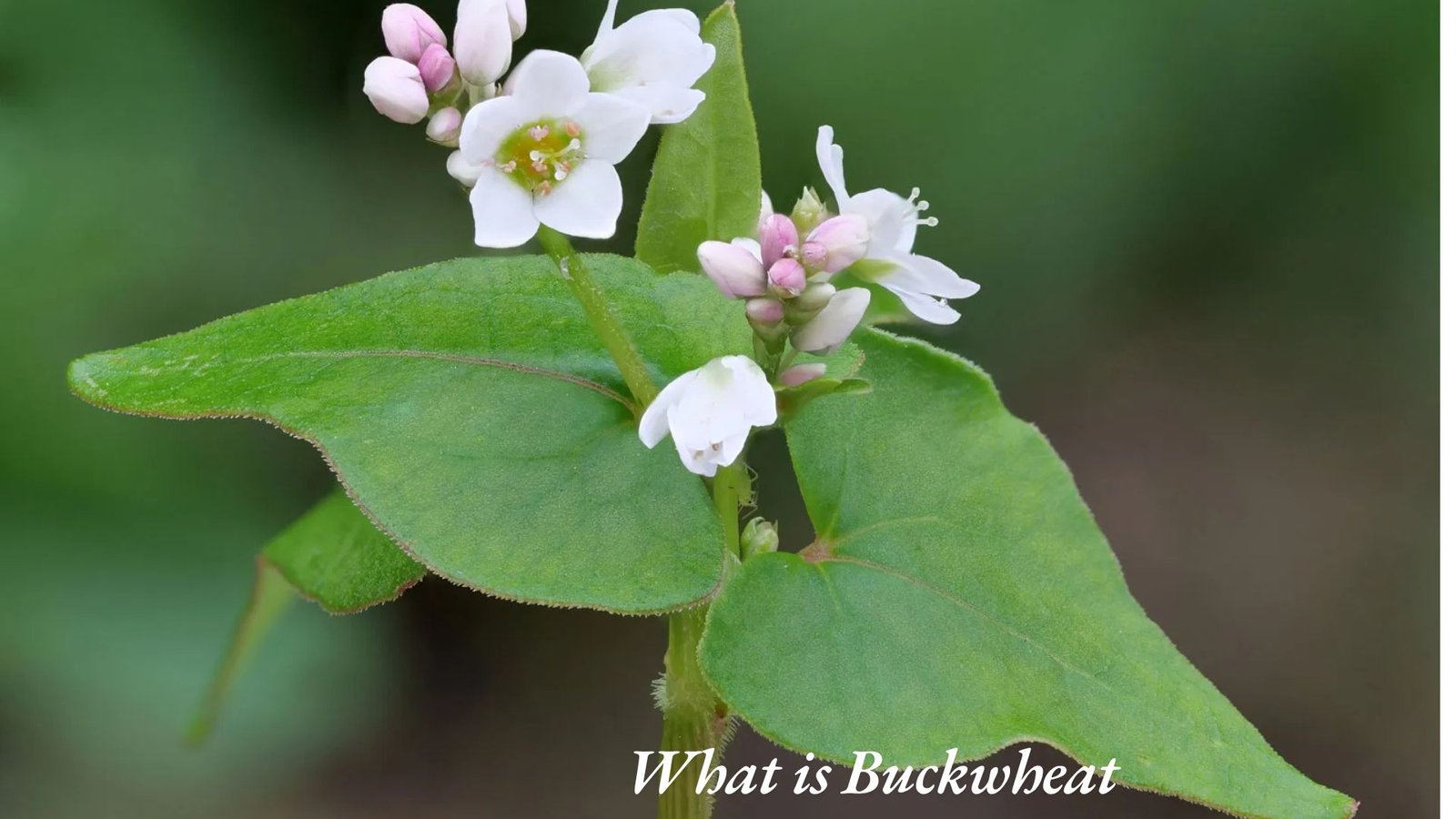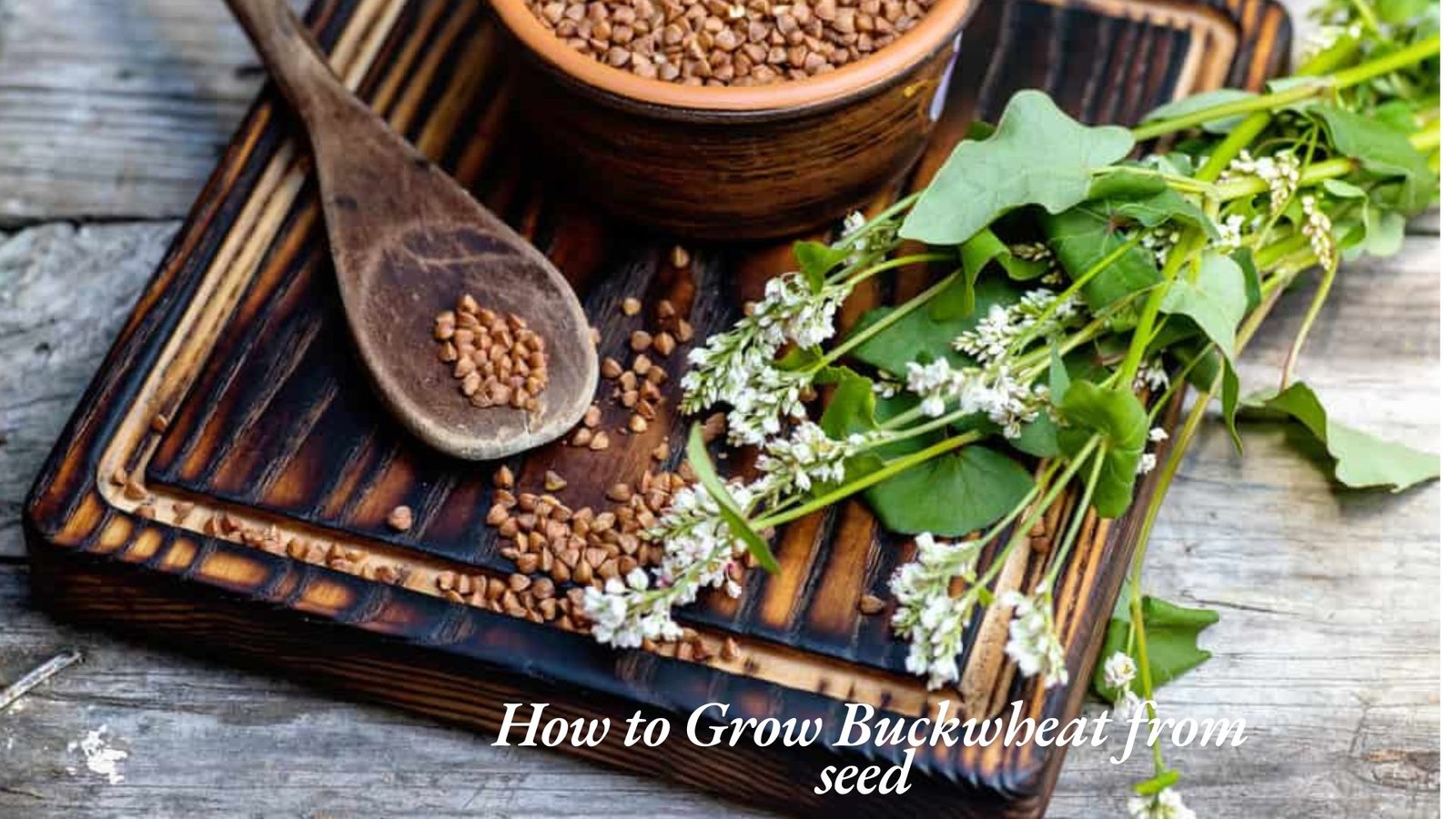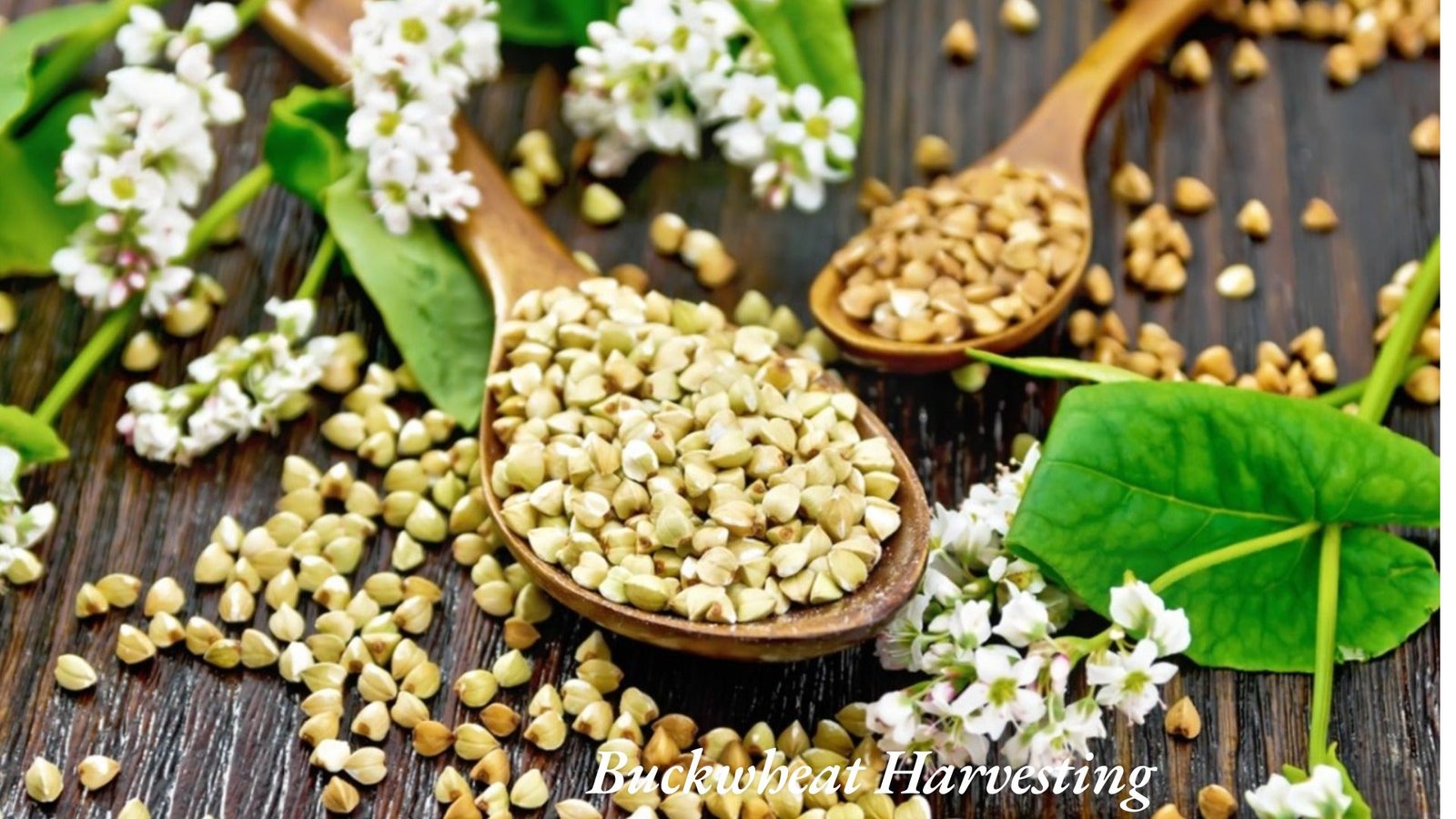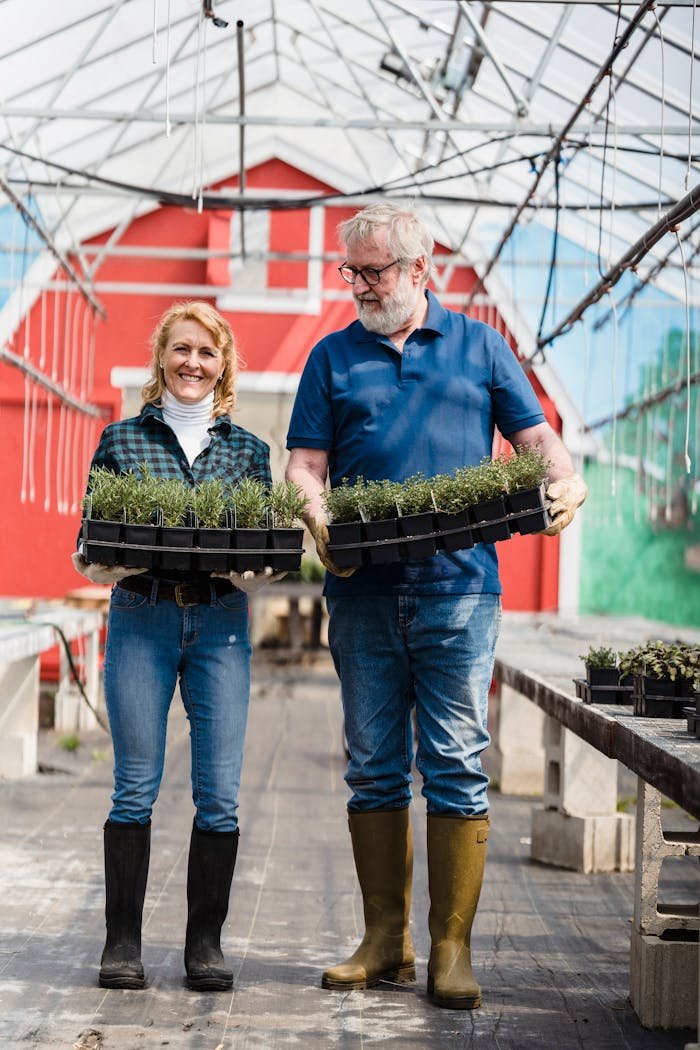If you’re looking for a fast-growing, low-maintenance crop that boosts soil health and attracts pollinators, learning how to grow buckwheat might be the perfect choice for your garden or homestead. Buckwheat is an ancient grain that grows quickly, matures in just 10–12 weeks, and offers a variety of benefits beyond just food. It’s ideal for buckwheat farming, especially in regions with short summers.
Whether you’re interested in buckwheat grain production, enhancing your soil with buckwheat as a cover crop, or supporting bees with buckwheat for pollinators, this plant offers versatility and value. With proper buckwheat field preparation, even beginner growers can succeed and enjoy its many rewards.
What is Buckwheat and Why Should You Grow It?

Buckwheat is not a true grain like wheat or barley. It is a pseudo cereal, meaning it acts like a grain but is technically a seed. People started buckwheat farming over 8,000 years ago. Today, it’s popular again for many good reasons. It’s easy to grow, matures quickly, and grows well even in poor soils.
In fact, “How fast does buckwheat grow?” Buckwheat takes only 10 to 12 weeks to mature. This makes it ideal for short-season areas and double cropping with buckwheat after an early harvest of something like wheat or peas. It grows well in many parts of the USA, especially in states like New York, Minnesota, and Missouri.
Is Buckwheat Gluten-Free and Healthy?
Yes, buckwheat is naturally gluten-free. Many people with gluten allergies use it as a safe option. “Buckwheat for gluten-free diets” is a big trend in health circles. It’s rich in protein, fiber, and minerals like magnesium, zinc, and iron.
There is often a debate about “Buckwheat vs wheat nutrition”. Buckwheat wins in many ways. It has more fiber and antioxidants. It also doesn’t spike your blood sugar. That makes it good for diabetics and those eating clean or natural diets.
When and Where to grow buckwheat Plant
Knowing “when to plant buckwheat in summer” is key. Buckwheat likes warm weather. In most U.S. zones, plant it from May to August when the soil is above 70°F. It hates frost. That’s why timing is so important.
Buckwheat growing conditions are not hard to meet. It grows in many soil types but prefers well-drained, light to medium soil. Wondering “Is buckwheat drought tolerant?” Not really. It wilts in dry heat but recovers overnight. So make sure it gets enough water at least during seed germination.
How to Grow Buckwheat from seed

If you’re growing buckwheat from seed, here’s what you need to know. Start with clean, good-quality seed. You can sow it using a grain drill or simply broadcast it and rake it in. A common mistake is planting too deep. The ideal “buckwheat planting depth and spacing” is about 1 inch deep with narrow row spacing of 6–7.5 inches.
For small gardens, rake seeds lightly into the soil and water gently. Use around 50–55 lbs per acre for buckwheat grain production and 70–80 lbs per acre for buckwheat as a cover crop. These seeding rates give you strong plant stands that suppress weeds and grow fast.
Top 9 Reasons to Grow Buckwheat in Your Garden
There are many great reasons to try organic buckwheat farming. First, it matures quickly. Second, it supports buckwheat for pollinators, especially bees. “Is buckwheat good for bees?” Yes! Its flowers bloom for 6–8 weeks, offering rich nectar.
Third, it’s excellent buckwheat for soil improvement. Buckwheat roots release acids that unlock phosphorus in the soil. Fourth, it acts as buckwheat for green manure, improving soil texture and nutrition. Fifth, it works as cover crops for summer weed control—great for smothering weeds in off-seasons.
Table: Top Benefits of Growing Buckwheat
| Reason | Benefit |
| 1 | Fast-growing: 10–12 weeks to maturity |
| 2 | Great for bees and pollinators |
| 3 | Improves soil by unlocking phosphorus |
| 4 | Acts as green manure |
| 5 | Natural weed control |
| 6 | Gluten-free grain for cooking |
| 7 | Supports double cropping |
| 8 | Requires low input (no fertilizer/pesticide) |
| 9 | Grows in poor soils |
Buckwheat Harvesting: Timing, Method & Tools
Timing your harvest is crucial. “How to harvest buckwheat without shattering” is one of the biggest concerns. Start harvesting when 80–90% of seeds are brown. Waiting too long leads to seed drop or shatter.

You can use a combine or cut by hand if you’re harvesting on a small scale. Basic buckwheat harvesting techniques include swathing and combining. For grain storage, keep moisture below 16%. To sell to food buyers, keep it under 15% and don’t wait too long—older groats darken and lose value.
Culinary Uses: From Grain to Flour & Pancakes
Once harvested, buckwheat can be used in many recipes. After removing the hull, the inside part is called a groat. You can boil whole groats for kasha or grind them into flour. Making soba noodles with buckwheat flour is a famous Japanese use.
In the U.S., many people make pancakes, muffins, and crackers with buckwheat flour. Some grocers even sell it pre-toasted. It’s easy to digest and high in fiber, making it a strong choice for clean eating.
Other Amazing Uses of Buckwheat
Buckwheat has many other uses. Its hulls are used in pillows. These pillows stay cool and help people sleep better. Some people prefer them over foam. You can also grow buckwheat as wildlife food plots—turkey, quail, and deer eat the seeds.
Can livestock eat buckwheat? Yes, but only in small amounts. Too much can make their skin sensitive in sunlight. So, limit it to 20–30% of their feed. It’s also palatable hay for cattle if mixed with protein-rich forage.
Insects, Diseases & Organic Pest Management
Buckwheat has few problems with pests. You might see some grasshoppers, but they rarely cause harm. The plant attracts beneficial insects that kill harmful ones. That’s a win for natural farming.
If you follow organic buckwheat farming, you won’t need pesticides. Just make sure the buckwheat field preparation is good. Remove weeds before planting. Once buckwheat covers the ground, weeds won’t stand a chance.
Challenges: Weeds and Growing Mistakes to Avoid
One issue is that buckwheat doesn’t leave strong residue. After it matures, weeds can grow back if you don’t plant something else. Also, don’t use herbicides that stay in the soil long. They can hurt your next buckwheat crop.

New gardeners often ask, “Does buckwheat reseed itself?” Yes, a bit. If it drops seed before you harvest, you might get some new plants. This can be good or bad, depending on your plan. Either mow it or till it into the soil quickly.
Conclusion
Now you know how to grow buckwheat at home for grain or cover crop. Whether you’re looking for food, soil health, or a pretty field full of bees, buckwheat has you covered. It’s easy, fast, and flexible.
From buckwheat seed varieties to buckwheat in crop rotation, this crop fits many goals. If you’re new to growing, start small. The results might just surprise you—and your soil will thank you.
FAQs
1. How long does buckwheat take to grow?
Buckwheat matures in about 10 to 12 weeks, depending on planting time and climate.
2. Is buckwheat easy to grow?
Yes, it’s very easy to grow—it thrives in poor soil, grows fast, and needs little care.
3. Will buckwheat come back every year?
No, buckwheat is an annual crop, but it may reseed itself if left to drop seed.
4.Where is the best place to grow buckwheat?
Buckwheat grows best in well-drained, light soils with full sun and warm summer temperatures.
5.Can you plant store bought buckwheat?
Yes, if it’s raw and unroasted, you can sprout or plant it—but germination isn’t always guaranteed.



